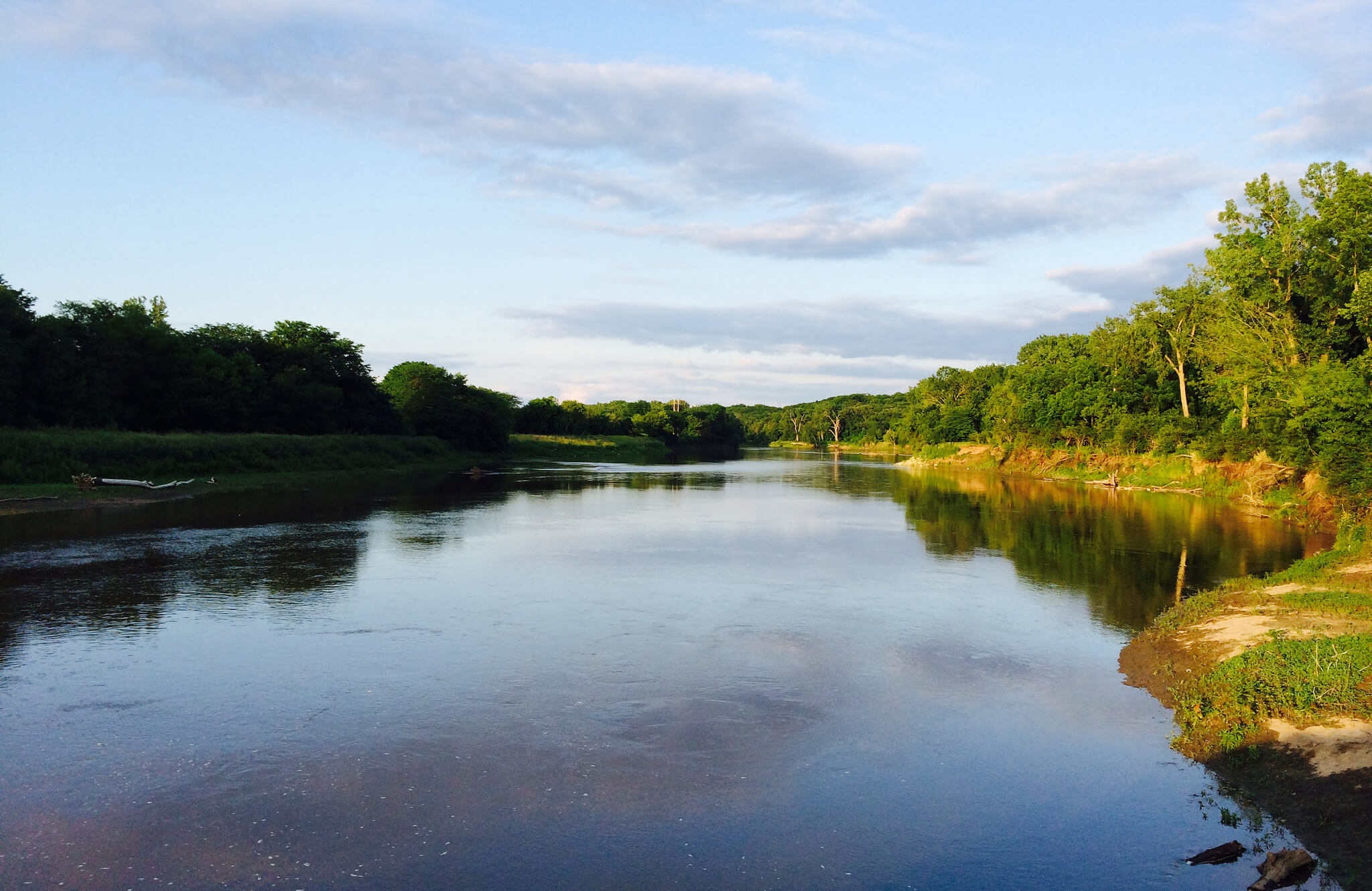
There is a growing number of dangerously polluted waters in Iowa. More than half (750) of Iowa’s surface waters (lakes, streams and rivers) are designated as impaired. Much of the impairment results from the elevated fecal bacteria in Iowa waters as a result of the 10,000 Concentrated Animal Feeding Operations (CAFOs). Iowa CAFOs produce 22 billion gallons of manure that is spread over Iowa. A great deal ends up washing into Iowa surface waters creating dangerous levels of fecal bacteria.
Pressure is increasing on Governor Kim Reynolds and the Republican-controlled Legislature to clean up Iowa’s dangerously impaired lakes and rivers. However, they won’t commit the funds, resources or mandate changes to effectively clean up Iowa waters.
Governor Reynolds has decided the easiest and cheapest way to clean up Iowa waters is to change the rules and claim victory. Reynold’s Department of Natural Resources has come up with a creative way to reduce the number of Iowa’s impaired waterways.
They’re proposing to hide dangerous levels of fecal E.coli bacteria levels from the public and claim victory by reducing the number of impaired waters. The proposal would change the water sampling results by eliminating one of the two essential tests they currently use to monitor the fecal E.coli bacteria in Iowa’s rivers and lakes. The current criteria require both single samples of water and the average (Geometric Mean) of single samples over a period of time.
Currently the DNR uses the combined results of these two tests to determine if Iowa’s waters are safe for Iowans to use for swimming and recreation. If the tested water (lakes or rivers) fail either of these tests they are declared unsafe for swimming and water recreation. The change will eliminate using the single day samples and instead rely on an average of samples. The average of samples could fall below the maximum safety limit while some single samples could far exceed the maximum safety limits for human contact. Using the new proposed rules, if the average of daily samples is below the maximum safety limits, then the impaired water body would be removed from the impaired waters list even though it still contains dangerous bacteria.
The Des Moines Register published an August article by Susan Heathcote, Program Director for the Iowa Environmental Council. She provided an example citing an impaired section of the Boone River. Under the new proposed rules, the Boone would be removed as impaired even though it still would exceed fecal bacteria limits.
“The average bacteria levels of water samples collected over the past three years meet (average) Iowa’s Geometric Mean standard, and water quality is usually safe for swimming. However, this stretch of the Boone River is on the impaired waters list because seven of the samples (28 percent of samples collected) exceed the Single Sample Maximum bacteria criteria. If the DNR change in the bacteria standard is adopted, this river segment would come off of the impaired list — despite the fact that more than one out of every four days when samples were collected, there was a spike in bacteria levels that presented a significantly increased risk of illness for anyone swimming or playing in the water at that time,” Heathcote explained.
Reynold’s DNR proposal will do nothing to reduce the health and safety risks to Iowans from impaired water bodies. The DNR’s website clearly warns of the serious health risks from contact with water exceeding the fecal bacterial limits. Their proposal would violate their own warnings by hiding the dangers in Iowa’s impaired waters.
“High levels of these bacteria indicate that the water has come into contact with fecal material and that pathogens or disease-causing microorganisms may be present. Levels of indicator bacteria above the water quality standard indicate a greater risk of becoming sick for people recreating in the water. Children, the elderly and people with weakened immune systems have an increased risk of becoming ill when in contact with contaminated water. A variety of diarrheal diseases, and other infections such as skin, ear and respiratory infections, are associated with swimming in contaminated water. Diarrhea is one of the most common illnesses associated with swimming. Diarrhea is spread when disease-causing microorganisms from human or animal feces get into the water. You can get diarrhea by accidentally swallowing small amounts of water that contains these microorganisms.”
Governor Reynolds has a responsibility to insure the health and safety of Iowans that use Iowa’s water resources. The Iowa DNR answers to her and their proposal is a cynical attempt to remove impaired water bodies simply by lowering the safety standards. Concealing dangerous health risks to Iowans is a betrayal of leadership. Reynolds has a duty to honestly provide Iowans with the basic health information they need to keep their families safe.
by Rick Smith
Posted 9/6/17
Politics

New Biden rule protects privacy of women seeking abortions
Under the new rules, state officials and law enforcement cannot obtain medical records related to lawful reproductive health care with the goal of...

Biden marks Earth Day by announcing $7 billion in solar grants
The Biden administration on Monday announced the recipients of its Solar For All Program, a $7 billion climate program that aims to lower energy...
Local News

No more Kum & Go? New owner Maverik of Utah retiring famous brand
Will Kum & Go have come and gone by next year? One new report claims that's the plan by the store's new owners. The Iowa-based convenience store...

Here’s a recap of the biggest headlines Iowa celebs made In 2023
For these famous Iowans, 2023 was a year of controversy, career highlights, and full-circle moments. Here’s how 2023 went for the following Iowans:...





